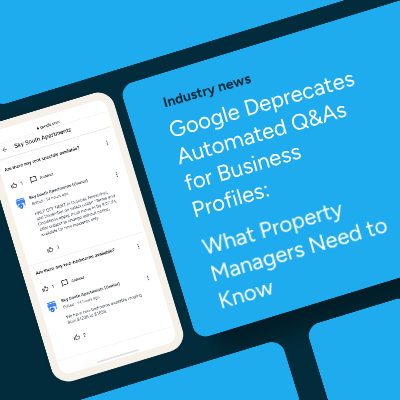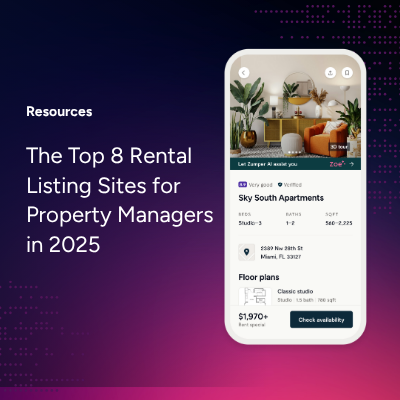
It’s a basic human need to crave a safe place to call home. This is why Zumper‘s rental marketplace was built with inclusion, respect, and safety at its core. We’re empowering people to rent with confidence, and we’re building a workplace where everyone feels welcome.
Zumper’s own Vice President of People, Tina Sy, hosted a panel discussion on the importance of diversity and inclusion in rental housing at the 2021 National Apartment Association’s #Apartmentalize Conference.
If you missed the discussion, or if you’re interested in learning about diversity, equity, and inclusion (“DEI”) initiatives, Tina shared more details with us about its importance and how to implement programs in your organization. Here’s what she had to say.
Hey Tina! So, the first question is pretty straightforward — what do you mean by diversity & inclusion, and why is it important?
At its core, diversity & inclusion means diversity of thought and inclusion of ideas. It means cultivating an environment that values your voice and allows you to bring your whole self to work. According to Deloitte, 61% of employees feel the need to “cover” at least one axis of themselves — like ethnicity or sexual orientation — at work. To have an environment where you can be heard and where you can authentically be yourself, requires psychological safety and a sense of belonging within the workplace.
The rampant socioeconomic and racial inequality in the US has affected all of us. It is difficult to separate these experiences from the workplace and prevent them from negatively impacting employee morale and productivity. So it’s important to create outlets for discussion on DEI — even on sensitive topics like current events — to help everyone feel safe, seen, and heard.
How can an organization start to foster diversity and inclusion? What are you doing at Zumper that works?
Employee Resource Groups (“ERGs”) are at the heart of Zumper’s inclusive environment. We currently have four: Black Lives Matter at Zumper, Out@Zumper (LGBTQIA), ZWomen, and ZAPIAH (Zumper Asian or Pacific Islander American Heritage). Each ERG has formal board members, executive sponsors, and budgets to foster a sense of belonging for our employees that identify with minority groups as well as their allies. They also act as safe spaces to share perspectives and advocate for change in our communities.
Gathering feedback is vital to monitoring the impact of DEI initiatives. We run anonymous surveys with questions dedicated to measuring psychological safety—like the ability to voice an opinion without fear of negative consequences, whether employees feel respected, and whether diverse viewpoints are incorporated into decision-making.
What about hiring? How do you make sure you’re attracting and hiring diverse candidates?
When hiring, we determine URMs, or “underrepresented minorities,” within each department to assess where we need to move the needle. For example, women or non-binary gender is a URM for the engineering department, and in sales, Black, Hispanic/Latinx, Native American, Pacific Islander, or 2+ Races are URMs. We also track overall hiring by gender, ethnicity, and age for all departments.
It’s important to make sure job descriptions are written with inclusion in mind. We use an AI tool called Textio to ensure our postings appeal to a variety of genders and age groups. It analyzes how words or phrases resonate with job seekers and makes suggestions on how to strike a more balanced tone.
You can also dedicate time to sourcing URMs. This ensures we have a diverse pool of candidates to consider. When interviewing, we follow an interpretation of the Rooney Rule, created by Dan Rooney, where we require at least one URM to be interviewed at the Hiring Manager stage. In the future, we hope to raise that bar so that a URM must make it to an onsite interview or final round.
Remote positions and considering candidates with no previous work experience in multifamily, are other opportunities to pull more diversity into the industry. You increase the overall talent pool.
Retention is also a huge factor, right? You want diverse talent at all levels of the organization. Is there a promotion or retention strategy that has worked?
Equal pay assessments are critical to retaining diverse talent. During each performance cycle we check for disparities in salary across employees who perform the same job function.
Mentorship programs are another key opportunity. Cornell published a study citing they improve promotion and retention rates for minorities and women from 15% to 38%. So mentoring not only increases diverse representation in leadership but also helps retain them—thus increasing our pool of diverse internal candidates for advancement. It’s a virtuous cycle.
At Zumper, we’re working on our own mentoring program. It can be a beast of a project to coordinate, but a high-value one we look forward to making progress on.
Any advice on how to benchmark or measure the success of programs after implementing them?
We review four benchmarks and how they change every quarter:
- Diversity of hires
- Diversity of employees (shows a leaky bucket of diversity in turnover)
- Diversity by employee level (shows diversity in promotions)
- Diversity in engagement scores (shows inclusion)
These numbers can help you identify where you may need to improve and show the progress you are making over time.
So if I were a multifamily professional, what are three actions I could take now to improve my company’s DEI?
- Get buy-in on DEI. Co-create solutions with your leaders by setting goals and ensuring they understand why the future state is better. If necessary, share data about the top and bottom line results from companies with more diverse employee and/or leadership representation. This isn’t just the “right thing to do,” it actually impacts team engagement, productivity, and business results. Having leaders operate as co-creators means they are bought in to help with adoption.
- Create and send anonymous surveys to establish your current state of DEI and set a baseline for improvement.
- Embrace transparency with each other. DEI requires a shift in mindset, overcoming unconscious biases that are ingrained in us from childhood. Your family, friends, teachers, media, and life exposure influenced these points of view. They are the shortcuts that get us through life.
All of this takes effort, and we’ll probably never be done, but holding ourselves and each other accountable is important to making DEI progress.
A special thanks to Tina Sy for sharing her insights and advice, and we hope you find this helpful in your efforts to make the multifamily space a more diverse and inclusive industry.



